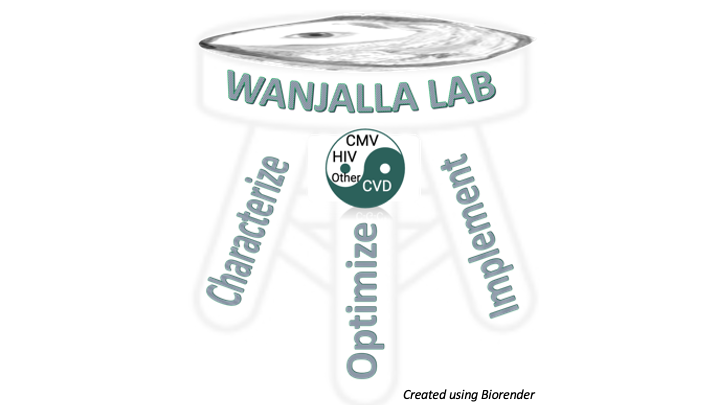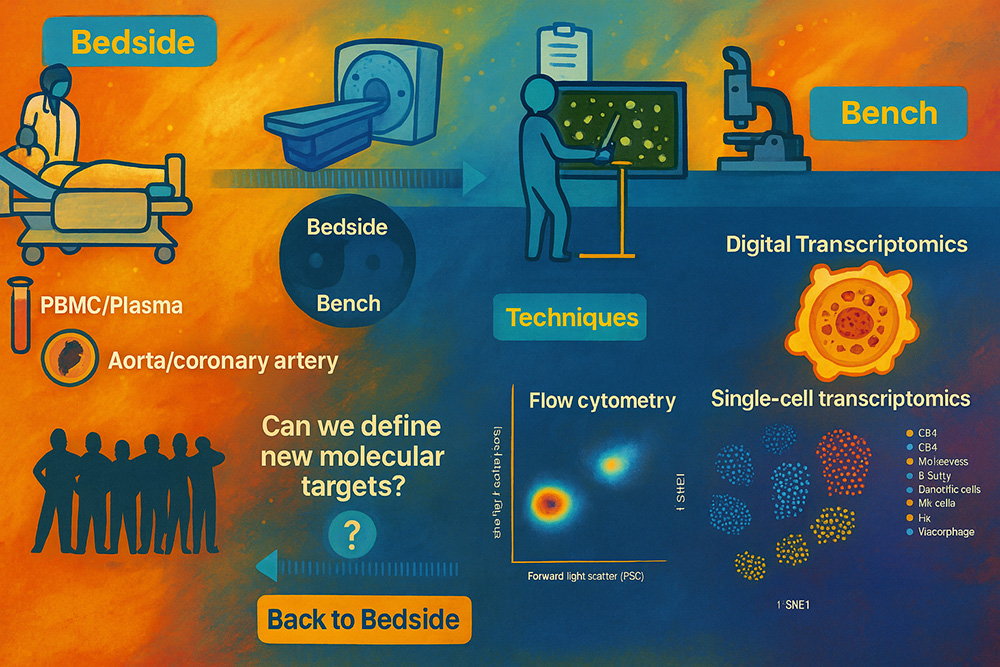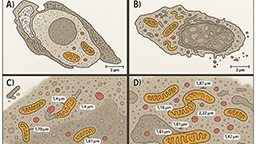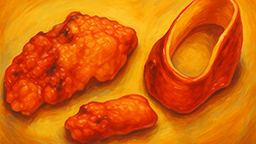Our Mission
The Wanjalla Lab aims to understand the immune drivers of atherosclerotic cardiovascular disease (CVD) and cancer in people living with chronic viral infections, including HIV.
With this knowledge, our research aims to identify novel targets for reducing death from atherosclerotic CVD and cancer in people living with and without HIV.

The Wanjalla lab investigates the immune-mediated effects of viral pathogens to uncover links between infections and diseases of aging, such as atherosclerosis and cancer.
Research Goal
To understand the role of viruses and virus-specific immune cells in the pathogenesis of atherosclerotic cardiovascular disease and cancer among people living with HIV and in the general population.
Our goals are guided by the following unanswered questions using HIV as a model of heightened and chronic immune activation:
- Is immune cell recruitment to atheroma stochastic or antigen-driven?
- What can be inferred from inflammatory responses in the aorta?
- What is the role of HIV-specific immunity in the pathogenesis of vulnerable atherosclerotic plaque?
- Which mechanisms contribute to residual inflammation, which is a risk factor for cardiovascular disease?
- What is the role of chronic viral–driven immune dysregulation in the initiation and progression of cancer?
- What is the role of the HIV viral reservoir in the recruitment of immune cells to atheroma and perivascular adipose tissue?
- In which cells is HIV present within the coronary arteries?
- Does co-infection with cytomegalovirus (CMV) alter the immune repertoire in atheroma?
- What can we learn from patients who have blips?
- Can we reduce cardiovascular risk by safely targeting inflammatory pathways with minimal adverse events?
Our Approach
Wanjalla Lab’s three pillar approach--Characterize, Optimize, and Implement—drives our mission to dissect how chronic viral infections (e.g., CMV, HIV, and others) interact with cardiovascular disease (CVD) and cancer.
We have a three-pronged approach:
- Characterize immune cells in blood and tissues related to atherosclerotic cardiovascular disease among people living with HIV
- Optimize technical and mechanistic assays to answer our research questions
- Test new therapeutic targets from our ongoing research


Our “Bedside‐to‐Bench‐to‐Bedside” workflow uses patient samples (blood, adipose, and arterial tissue) to uncover immune mechanisms linking chronic viral infection with atherosclerosis and cancer, then translates discoveries back to the clinic.
Research Domains

Chronic Inflammation & Endothelial Dysfunction
Dissecting how systemic cytokines, chemokines, and immune–endothelial cell interactions drive endothelial injury in people living with HIV.

Cytomegalovirus (CMV) in Atherosclerosis
Defining CMV’s contribution to plaque development and vascular inflammation in people living with HIV.

HIV-Mediated Atherosclerosis Progression
Profiling coronary arteries, aorta, and perivascular adipose tissue to uncover how HIV infection accelerates lesion formation.

Immune Cell Complexes in Chronic Disease
Characterizing T cell–monocyte and other immune cell aggregates in vascular and metabolic tissues—and their roles in ASCVD, cancer, and diabetes.